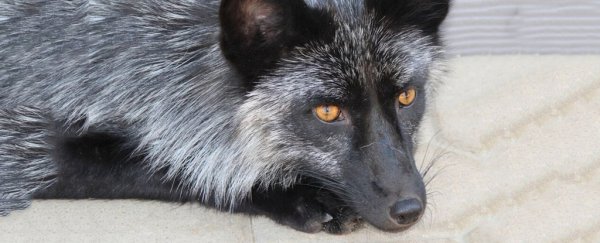In 1959, Soviet scientists embarked on an audacious experiment to breed a population of tame foxes, a strain of animals that wouldn't be aggressive or fearful of people.
Scientists painstakingly selected the friendliest foxes to start each new generation, and within 10 cycles they began to see differences from wild foxes - fox pups that wagged their tails eagerly at people or with ears that stayed folded like a dog's.
This study in animal domestication, known as the Russian farm-fox experiment, might be just a fascinating historical footnote - a quirky corner in the otherwise fraught scientific heritage of Soviet Russia.
Instead, it spawned an ongoing area of research into how domestication, based purely on behavioral traits, can result in other changes - like curlier tails and changes to fur color.
Now, the tools of modern biology are revealing the genetic changes that underpin the taming of foxes of Siberia.
In a new study, published Monday in Nature Ecology & Evolution, scientists used genome sequencing to identify 103 stretches of the fox genome that appear to have been changed by breeding, a first pass at identifying the genes that make some foxes comfortable with humans and others wary and aggressive.
The scientists studied the genomes of 10 foxes from three different groups: the tame population, a strain that was bred to be aggressive toward people and a conventional group bred to live on a farm.
Having genetic information from all three groups allowed the researchers to identify regions of the genome that were likely to have changed due to the active selection of animals with different behaviors, rather than natural fluctuation over time.
Those regions offer starting points in efforts to probe the genetic basis and evolution of complex traits, such as sociability or aggressiveness.
"The experiment has been going on for decades and decades, and to finally have the genome information, you get to look and see where in the genome and what in the genome has been likely driving these changes that we've seen - it's a very elegant experimental design," said Adam Boyko, an associate professor of biomedical sciences at Cornell University, who was not involved in the study.
While some genetic traits are relatively simple to unravel, the underpinnings of social behaviors aren't easy to dissect. Behavior is influenced by hundreds or thousands of genes, as well as the environment - and typically behaviors fall on a wide spectrum.
The existence of fox populations bred solely for how they interact with people offers a rare opportunity to strip away some of the other complexity - with possible implications for understanding such traits in people and other animals, too, since evolution may work on the same pathways or even the same genes.
"We're interested to see what are the genes that make such a big difference in behavior. There are not so many animal models which are good to study genetics of social behavior, and in these foxes it's such a big difference between tame foxes compared to conventional foxes, and those selected for aggressive behavior," said Anna Kukekova, an assistant professor at the University of Illinois at Urbana-Champaign, who led the work.
Kukekova and colleagues began studying one very large gene that they think may be linked to tame behavior, called SorCS1. The gene plays a role in sorting proteins that allow brain cells to communicate.
Kukekova is interested in determining what happens if the gene is deleted in a mouse and to search for specific mutations that might contribute to differences in behavior.
Bridgett vonHoldt, an assistant professor of ecology and evolutionary biology at Princeton University, said changes that occurred in foxes "overlap extensively with those observed in the transition of gray wolves to modern domestic dogs."
She said the study may help dog and fox biologists determine if there are complex behavioral traits under the control of just a few genes.
Recent fox evolution in a domesticated population may seem to have little to do with understanding the genetics of human behavior, but interest in domestication has grown as an area of scientific interest in part because genes involved in behavior in one animal may play a similar role in another.
"One reason why it is interesting is it gives us some insights about us. Humans are domesticated themselves, in a way," Boyko said.
"We're much more tolerant of being around other humans than probably we were as we were evolving; we've had to undergo a transformation, even relatively recently from the agricultural revolution."
2018 © The Washington Post
This article was originally published by The Washington Post.
